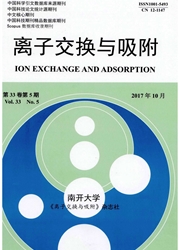

 中文摘要:
中文摘要:
以Fmoc/tBu酪氨酸和王树脂为原料,分别探讨了对称酸酐法、活化酯法和2,6-二氯苯甲酰氯(DCB)法中各种因素对氨基酸与树脂成酯反应的影响.实验表明:对称酸酐法连接率低,而其它两种方法,通过筛选合适的反应介质,均能取得良好结果.在活化酯法中,使用强极性溶剂DMA,弱极性溶剂THF/DCM和混合溶剂45%DMF/THF,反应5h,连接率均可提高到90%以上;在DCB法中,使用弱极性溶剂THF时,反应3h,连接率可达99%.总之,DCB方法是酪氨酸和王树脂成酯反应的最好方法.
 英文摘要:
英文摘要:
This paper has discussed the effect of different effects on the esterification yield of Fmoc-Tyr(t-Bu)-OH and Wang resin in symmetrical anhydride method, active ester method and 2,6-dichlorobenoyl chloride (DCB) method, respectively. The yield was lowest in symmetrical anhydride method; however, the yield was improved by other two methods. In active ester method, the yield was beyond 90% in DMA, THF, DCM and 45%DMF/THF with small amount of HOBt after 5h; While in DCB method, the highest yield was 99%, which was achieved by THF after 3h. In general, DCB method was the best method of esterification of Fmoc-Tyr(t-Bu)-OH and Wang resin.
 同期刊论文项目
同期刊论文项目
 同项目期刊论文
同项目期刊论文
 期刊信息
期刊信息
